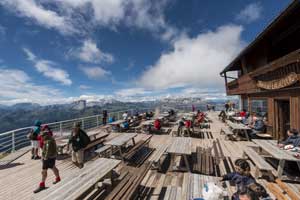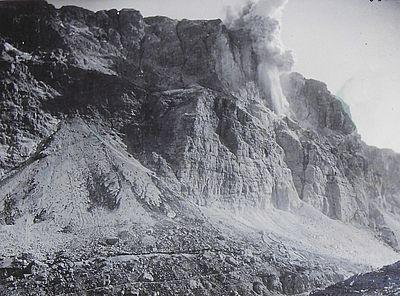At the Falzarego Pass and on the mountain above, the Piccolo Lagazuoi, during the First World War Austrian and Italian troops were engaged in fierce fighting.
Still today, in this area there are war remnants everywhere.
The goal of the Italian troops was to break through the Austro-Hungarian defenses at the Valparola pass and from here, through the Val Badia, to reach the railway of the Puster Valley.
At the beginning of the first attacks, in June 1915, few Austrian and Tirolean troops were deployed at this high altitude fort, while the Italian army was positioning many soldiers in this area.
But the decisive military advance failed because the Austrian troops had occupied important positions on the top of the mountains surrounding the Falzarego pass: Piccolo Lagazuoi and Sasso di Stria.
The Tre Sassi fort, built as a barrage against the Italian army on the Valparola pass, was exposed to severe artillery fire at the beginning of the war, which damaged its shell and made necessary its evacuation.
Thereupon the Austro-Hungarians moved their two cannons named "Max and Moritz" and positioned them inside the Goiginger tunnel on Mt. Sasso di Stria.
Under the command of Major Martini, in October 1915 the Italian troops succeeded in occupying the ledge (which later was named after him) climbing up along a defenseless gully below the Austrian emplacements on Mt. Lagazuoi and above the Austrian Vonbank-emplacement.
The Italian troops constantly continued to strengthen their position on this ledge because their shooting was extremely effective against the trenches of the Vonbank emplacement above the Valparola pass.



